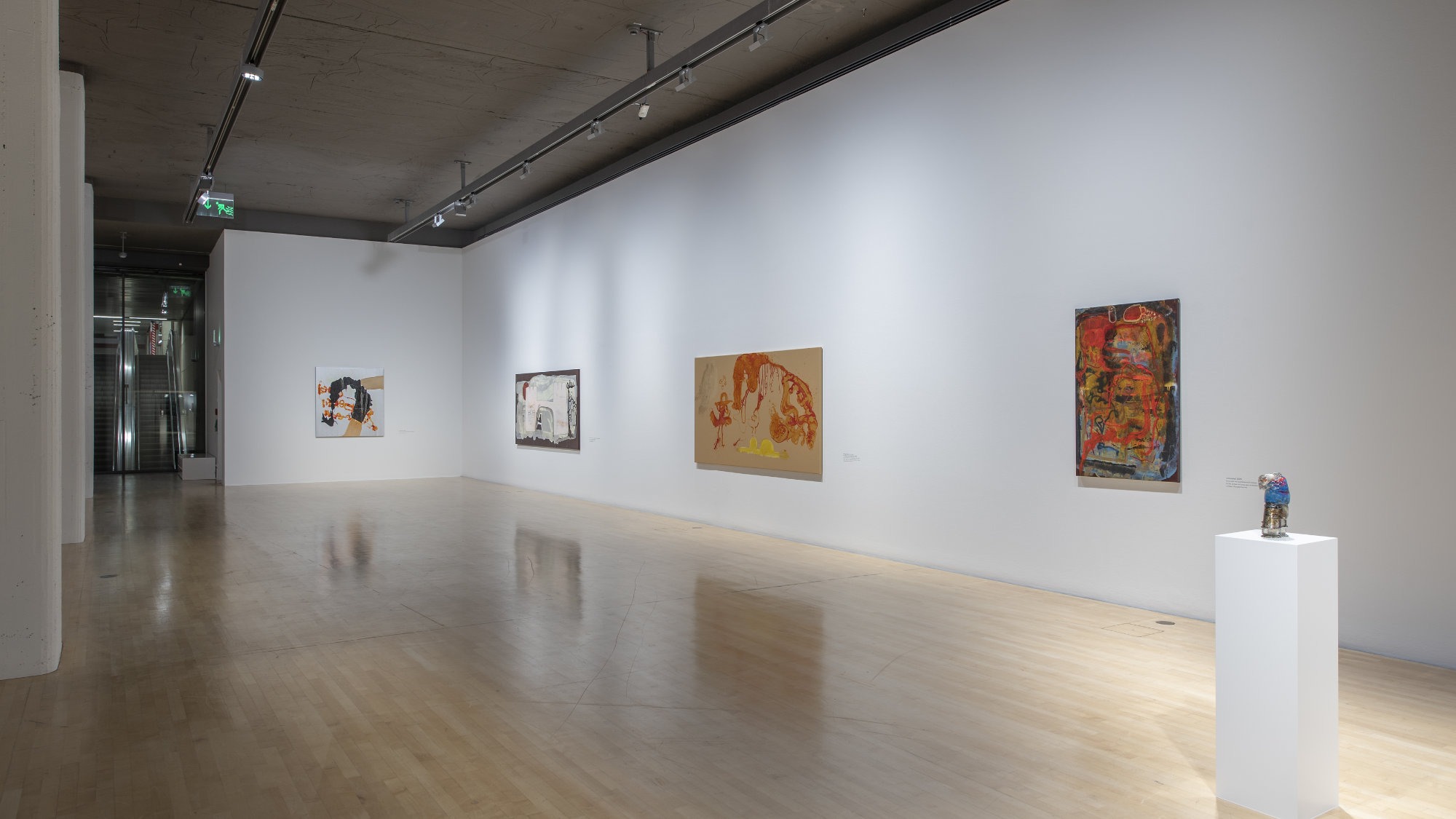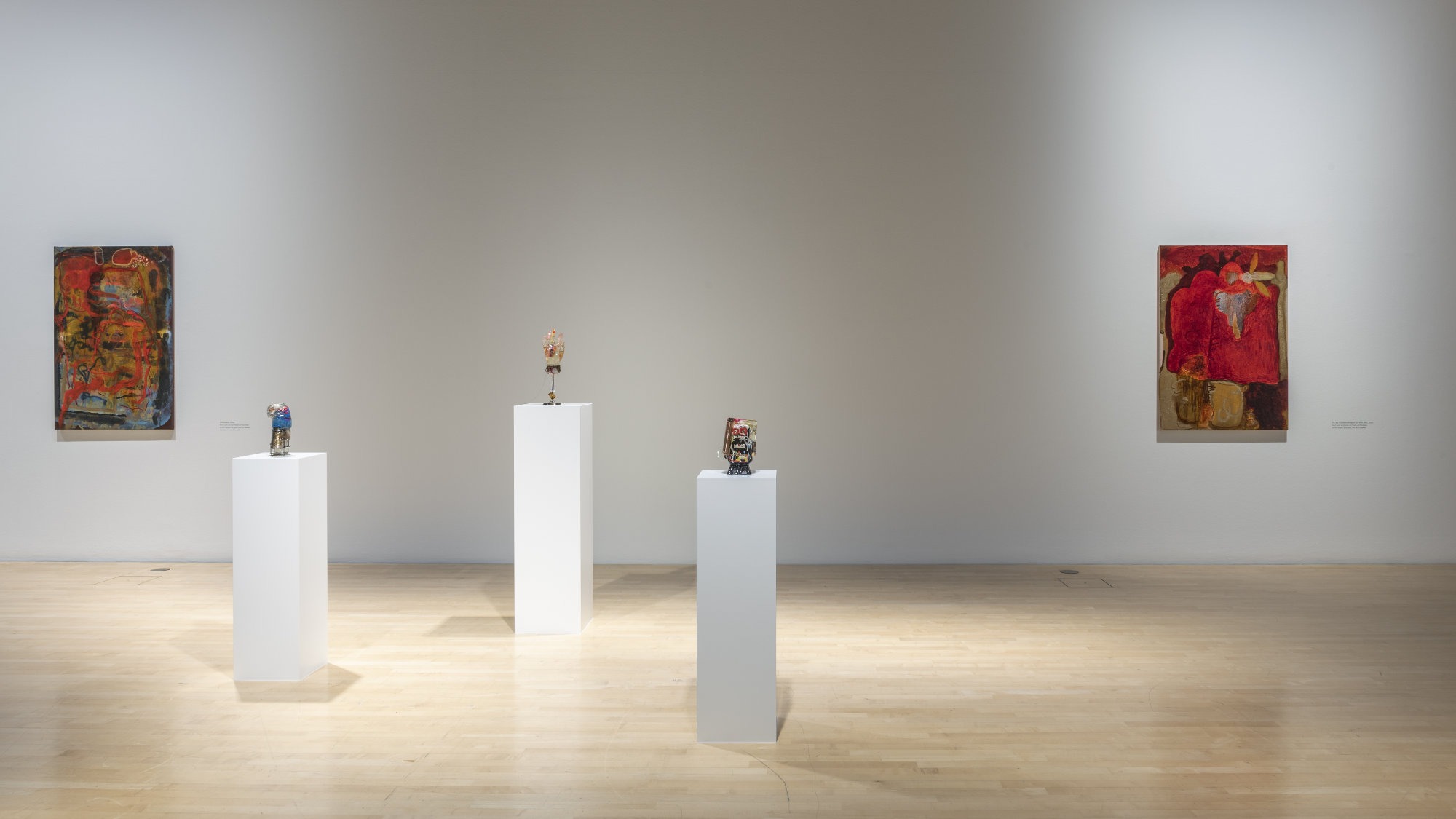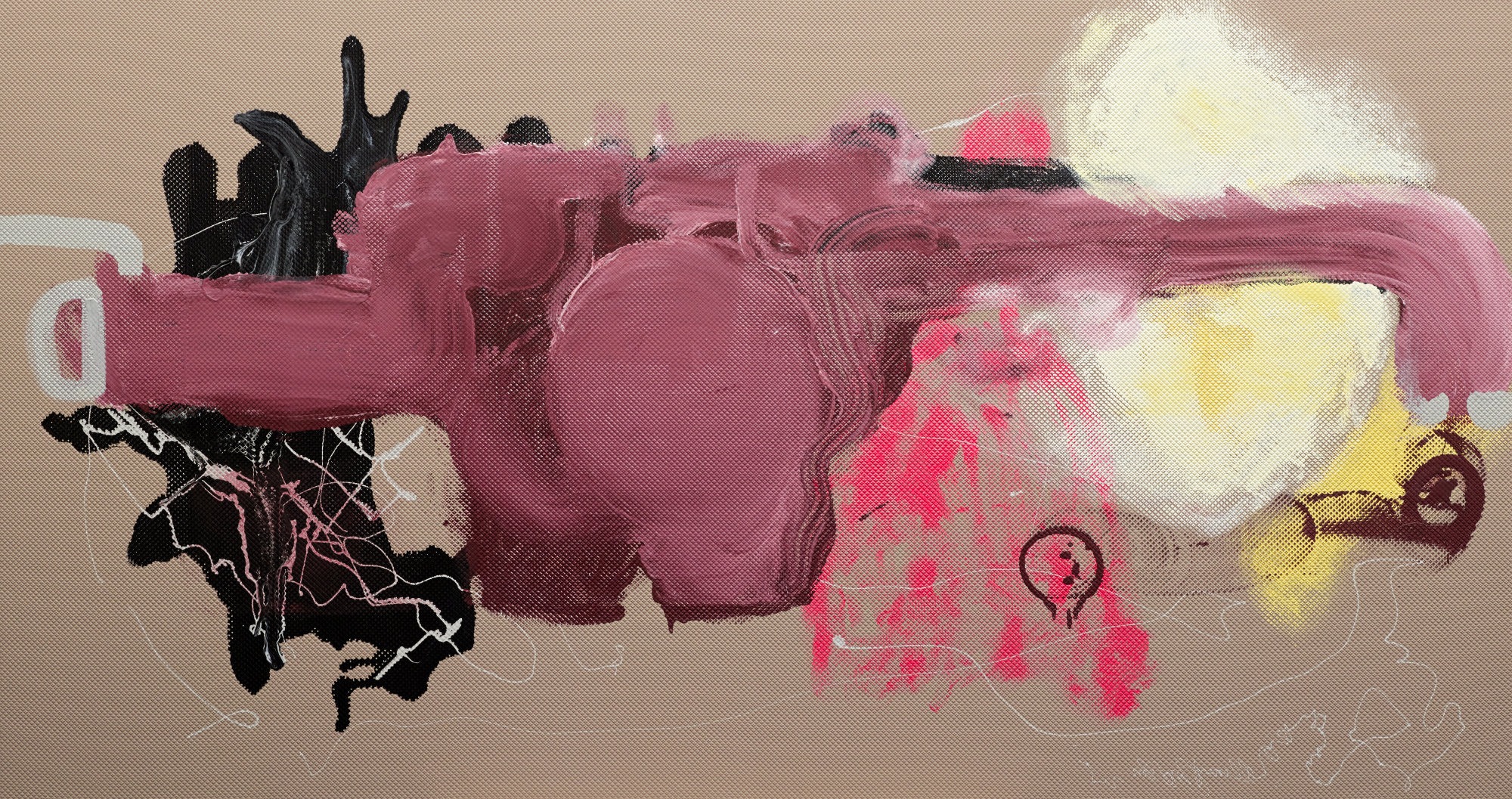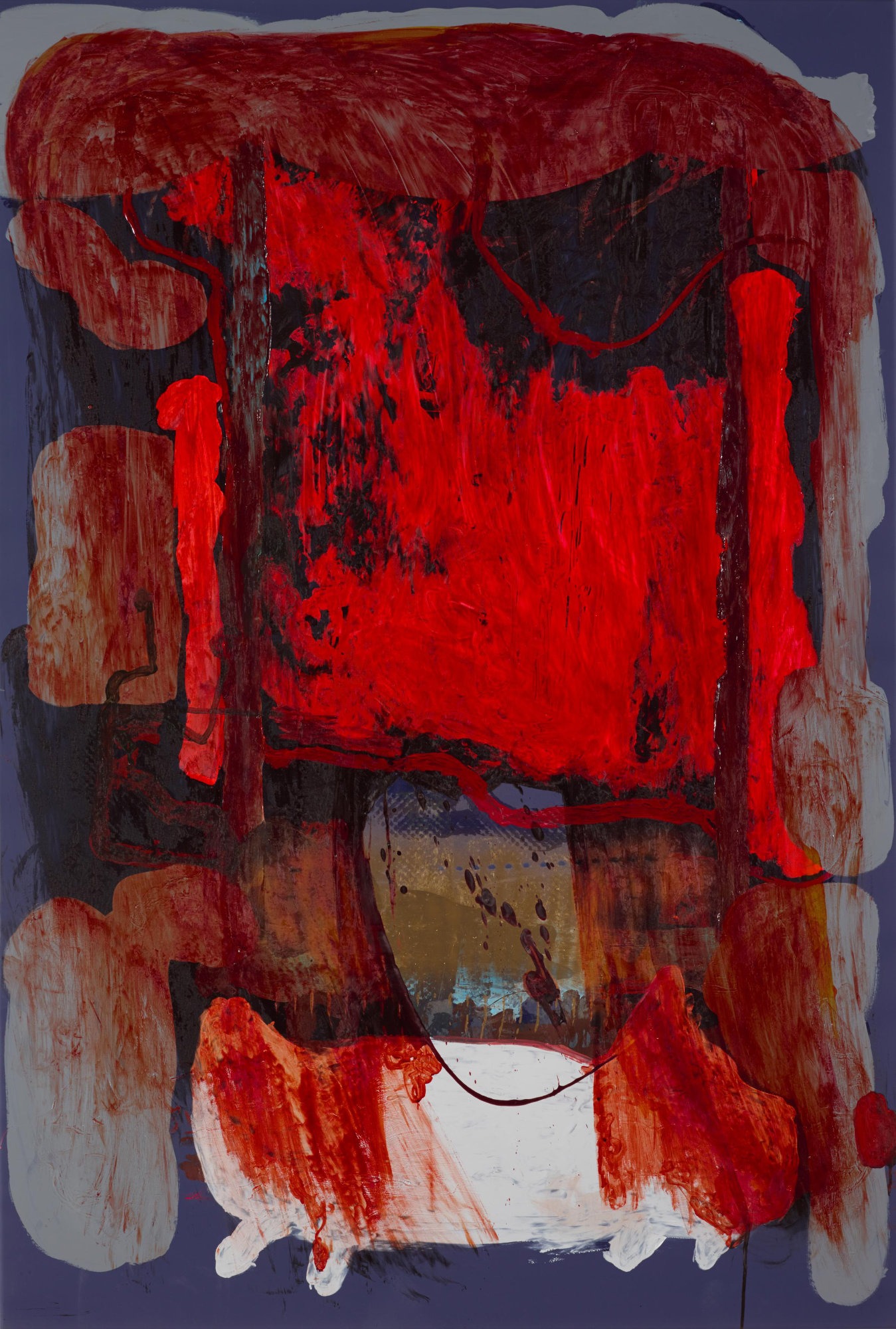Michaela Eichwald
01 Dec 2020 - 12 Sep 2021
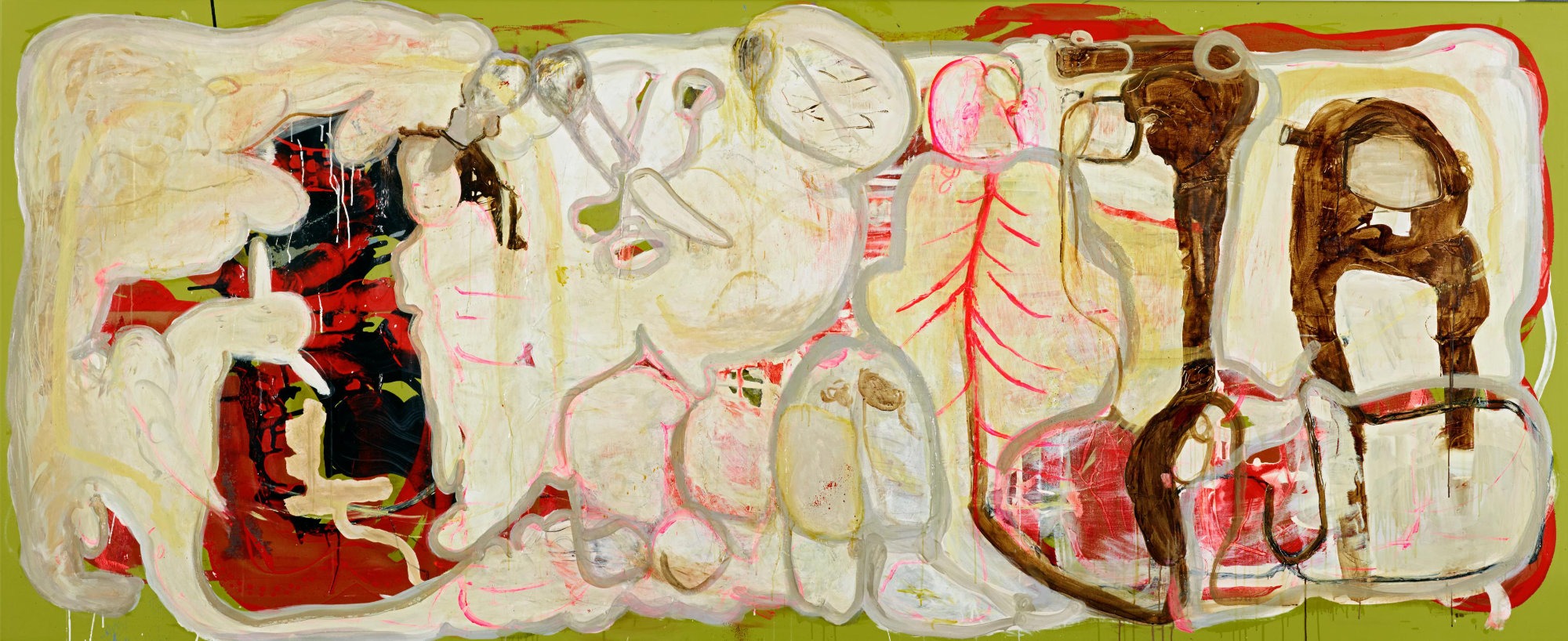
Michaela Eichwald
Durchseelung der Arbeit, 2020
Acryl, Lack, Schellacktusche, Kunstblut und Graphit auf Kunstleder
© VG Bild-Kunst, Bonn 2020
Durchseelung der Arbeit, 2020
Acryl, Lack, Schellacktusche, Kunstblut und Graphit auf Kunstleder
© VG Bild-Kunst, Bonn 2020
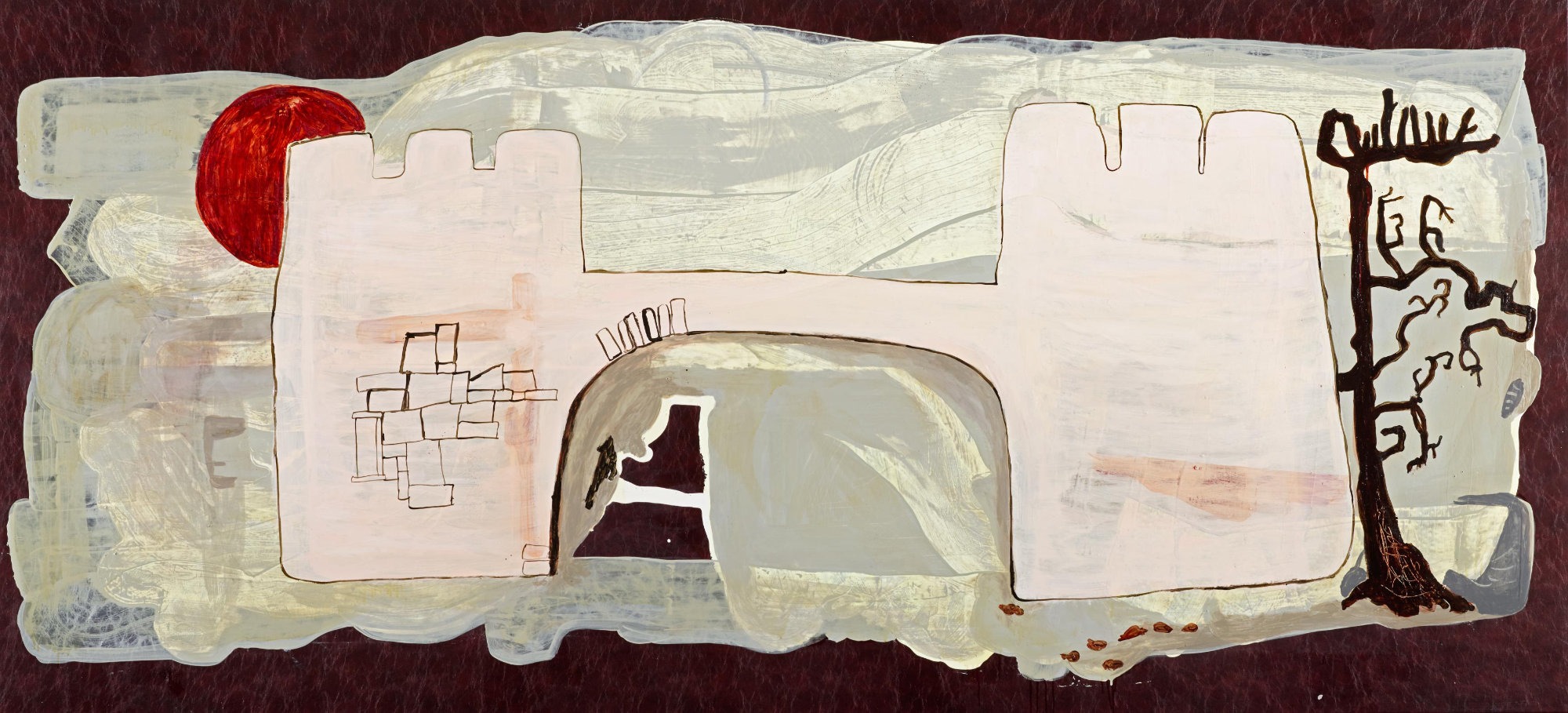
Michaela Eichwald
Auf das Ganze achten und gegen die Tatsachen existieren, 2020
Acryl, Lack und Schellacktusche auf Kunstleder
© VG Bild-Kunst, Bonn 2020
Auf das Ganze achten und gegen die Tatsachen existieren, 2020
Acryl, Lack und Schellacktusche auf Kunstleder
© VG Bild-Kunst, Bonn 2020

Michaela Eichwald
Mountains, 2019
Acryl, Graphit, Aufkleber und Lack auf Kunstleder, 135 x 330 cm
Privatsammlung Belgien
© VG Bild-Kunst, Bonn 2020
Mountains, 2019
Acryl, Graphit, Aufkleber und Lack auf Kunstleder, 135 x 330 cm
Privatsammlung Belgien
© VG Bild-Kunst, Bonn 2020

Michaela Eichwald
Kölner Morphologie, 2020
Acryl und Lack auf Polyurethangewebe, 130 x 290 cm
Mit freundlicher Genehmigung der Künstlerin
© VG Bild-Kunst, Bonn 2020
Kölner Morphologie, 2020
Acryl und Lack auf Polyurethangewebe, 130 x 290 cm
Mit freundlicher Genehmigung der Künstlerin
© VG Bild-Kunst, Bonn 2020

Michaela Eichwald
Zur Klärung eines Sachverhaltes bitte mitkommen, 2018
Acryl, Lack, Sprühfarbe auf Kunstleder
80 cm x 135,8 cm x 3,5 cm
Städtische Galerie im Lenbachhaus und Kunstbau München
© VG Bild-Kunst, Bonn 2020
Zur Klärung eines Sachverhaltes bitte mitkommen, 2018
Acryl, Lack, Sprühfarbe auf Kunstleder
80 cm x 135,8 cm x 3,5 cm
Städtische Galerie im Lenbachhaus und Kunstbau München
© VG Bild-Kunst, Bonn 2020
How to play a trick on painting with its own devices? That is one of the knottier questions in art. The Rhineland of the 1980s and 1990s—where Michaela Eichwald studied and started working as an artist—is known as the stomping ground of a generation of artists who addressed this question head-on. Their endeavors went hand in hand with an approach that framed the creative subject as a ridiculous figure; with a dash of histrionic self-irony, they staged the failure of their grand ambitions in the face of art history and the commodification of contemporary artistic production in their works. Eichwald by no means dismisses the art of these peers. Yet her own work does not give the stage to a self-centered creative ego, nor does the compromised role of painting in an age of commerce on steroids appear as a tangible motif.
Her works instead enact the "fundamental and inexhaustible problems of art" (Eichwald) in the interaction between material and form. The artist preferably paints on synthetic supports like faux leather and PVC. Where the classical canvas served as a neutral background on which the event of painting erupted with unchecked force, such creative effusion is now preemptively snarled by imitation ostrich leather in office-décor beige or car-roof lining with embedded glitter. Eichwald’s typically nonrepresentational formal idiom responds to the recognizably contemporary commercial aesthetic of her fabric supports in ways that range from pliable adaptation to adamant recalcitrance; so do her diverse materials (acrylic, paint, wax, watercolors, etc.).
The artist hones techniques that ensure that the work—be it a painting, a text, a sculpture, or a photograph—does not present as an ironclad assertion even when it is finished: "Less hedging, more trial balloons. More life, more expression, more unintelligibility," as she summed up her approach in an interview. Her output is distinguished by her productive disregard for the boundaries between creative disciplines—writing, painting, photography. That is readily apparent in the unconventional and speaking titles of her works, for which she draws on a wide range of sources, from medieval mysticism to contemporary lyric poetry, from bureaucratic solecisms to Dadaist word strings. The exhibition features paintings and sculptures from the past three years. Most of the works were created specifically for the presentation.
Michaela Eichwald was born in Gummersbach in 1967. She enrolled at the University of Cologne in 1987, studying philosophy, history, art history, and German literature. Her first writings were published in the 1990s, even before she started painting. She has had solo exhibitions at the Palais de Tokyo, Paris, Kunstverein Schwerin, and Kunstverein Aachen, among others. A solo exhibition of Eichwald’s work at the Walker Art Center, Minneapolis, will be on view through mid-May 2021.
Curated by Matthias Mühling and Stephanie Weber
The exhibition was made in cooperation with the Kunsthalle Basel.
Her works instead enact the "fundamental and inexhaustible problems of art" (Eichwald) in the interaction between material and form. The artist preferably paints on synthetic supports like faux leather and PVC. Where the classical canvas served as a neutral background on which the event of painting erupted with unchecked force, such creative effusion is now preemptively snarled by imitation ostrich leather in office-décor beige or car-roof lining with embedded glitter. Eichwald’s typically nonrepresentational formal idiom responds to the recognizably contemporary commercial aesthetic of her fabric supports in ways that range from pliable adaptation to adamant recalcitrance; so do her diverse materials (acrylic, paint, wax, watercolors, etc.).
The artist hones techniques that ensure that the work—be it a painting, a text, a sculpture, or a photograph—does not present as an ironclad assertion even when it is finished: "Less hedging, more trial balloons. More life, more expression, more unintelligibility," as she summed up her approach in an interview. Her output is distinguished by her productive disregard for the boundaries between creative disciplines—writing, painting, photography. That is readily apparent in the unconventional and speaking titles of her works, for which she draws on a wide range of sources, from medieval mysticism to contemporary lyric poetry, from bureaucratic solecisms to Dadaist word strings. The exhibition features paintings and sculptures from the past three years. Most of the works were created specifically for the presentation.
Michaela Eichwald was born in Gummersbach in 1967. She enrolled at the University of Cologne in 1987, studying philosophy, history, art history, and German literature. Her first writings were published in the 1990s, even before she started painting. She has had solo exhibitions at the Palais de Tokyo, Paris, Kunstverein Schwerin, and Kunstverein Aachen, among others. A solo exhibition of Eichwald’s work at the Walker Art Center, Minneapolis, will be on view through mid-May 2021.
Curated by Matthias Mühling and Stephanie Weber
The exhibition was made in cooperation with the Kunsthalle Basel.


